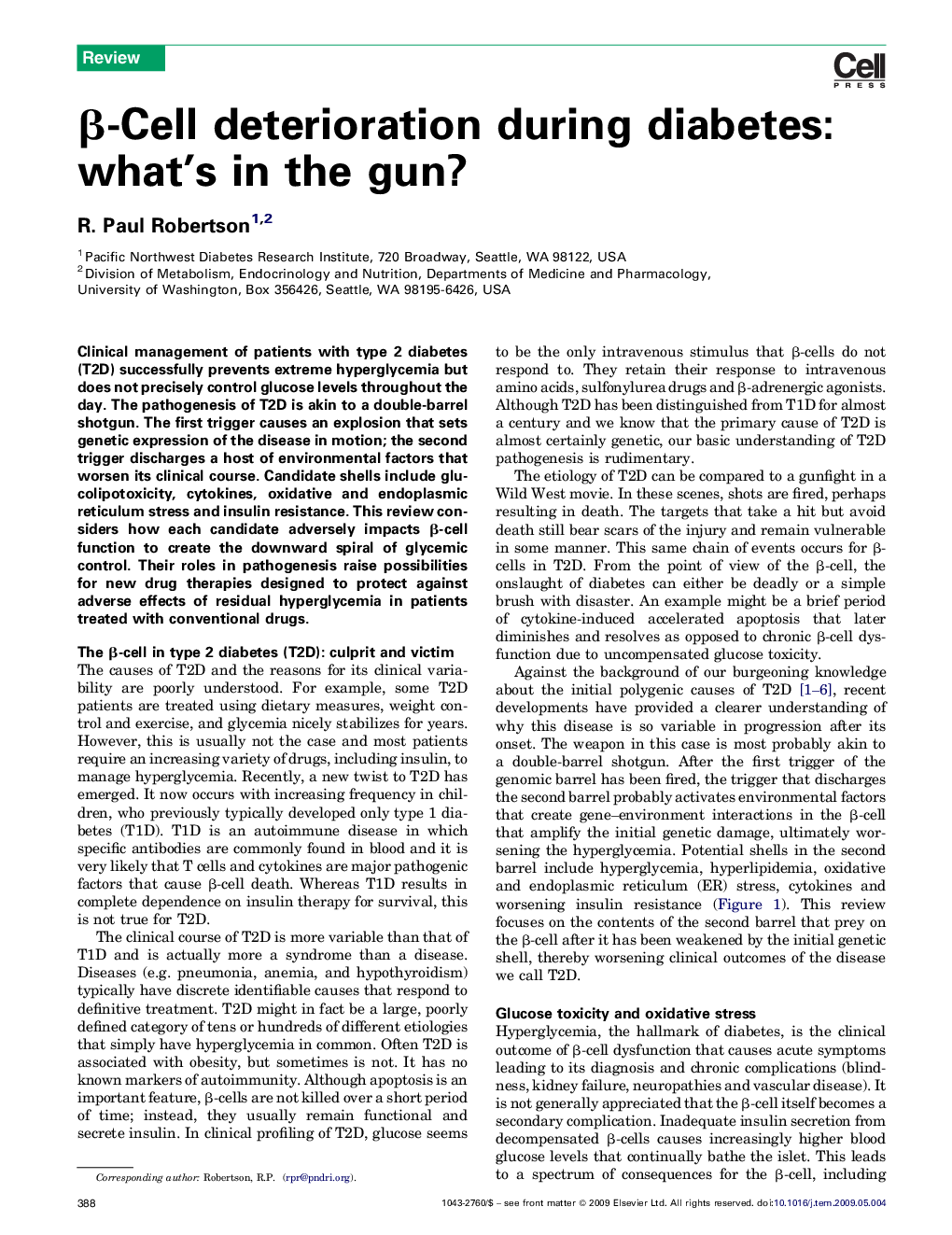| Article ID | Journal | Published Year | Pages | File Type |
|---|---|---|---|---|
| 2811104 | Trends in Endocrinology & Metabolism | 2009 | 6 Pages |
Clinical management of patients with type 2 diabetes (T2D) successfully prevents extreme hyperglycemia but does not precisely control glucose levels throughout the day. The pathogenesis of T2D is akin to a double-barrel shotgun. The first trigger causes an explosion that sets genetic expression of the disease in motion; the second trigger discharges a host of environmental factors that worsen its clinical course. Candidate shells include glucolipotoxicity, cytokines, oxidative and endoplasmic reticulum stress and insulin resistance. This review considers how each candidate adversely impacts β-cell function to create the downward spiral of glycemic control. Their roles in pathogenesis raise possibilities for new drug therapies designed to protect against adverse effects of residual hyperglycemia in patients treated with conventional drugs.
